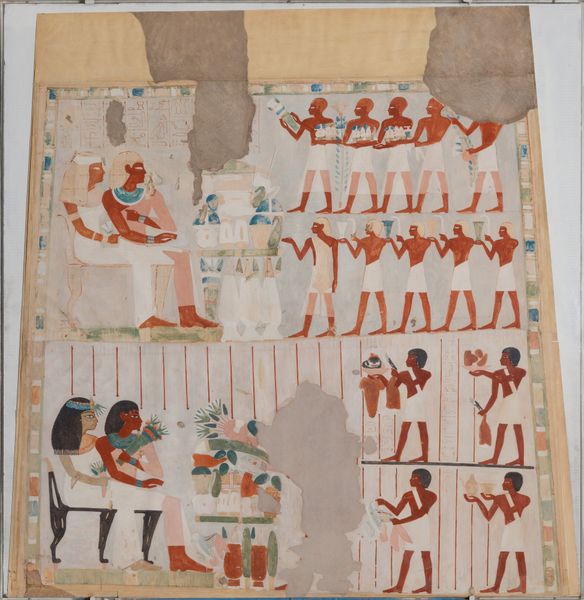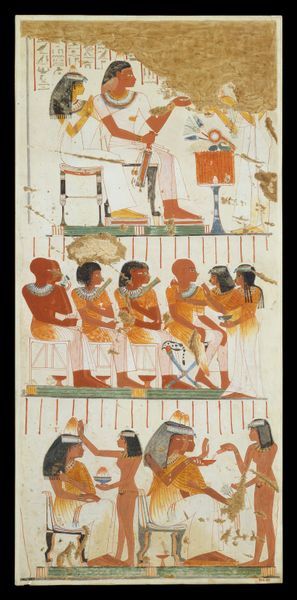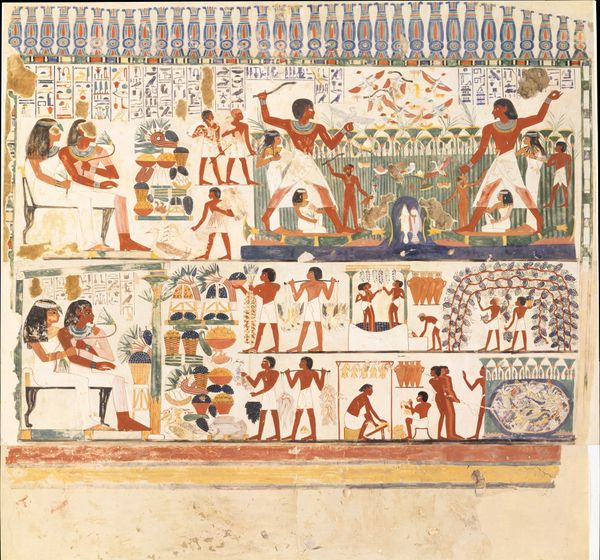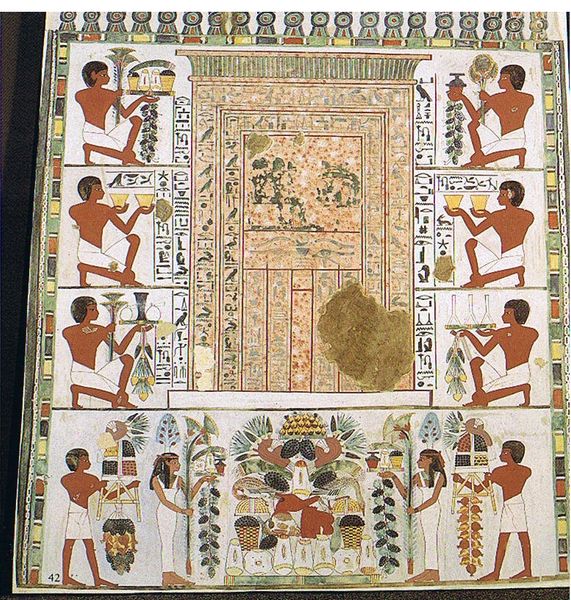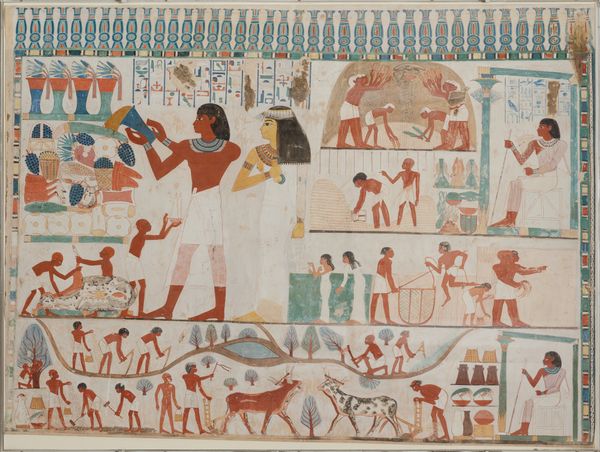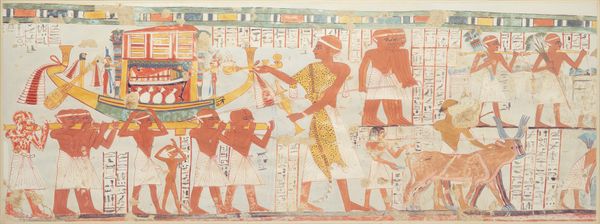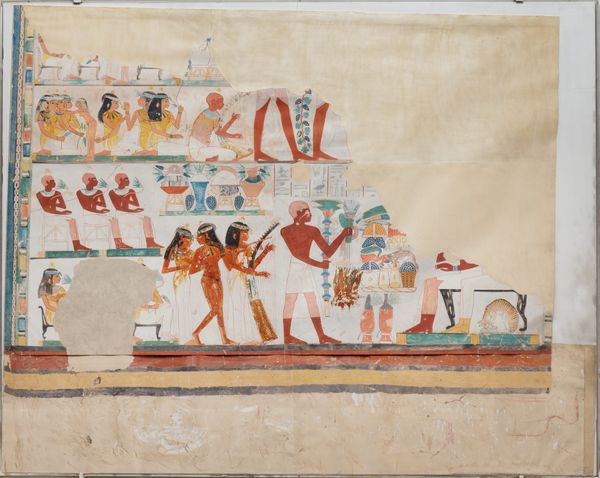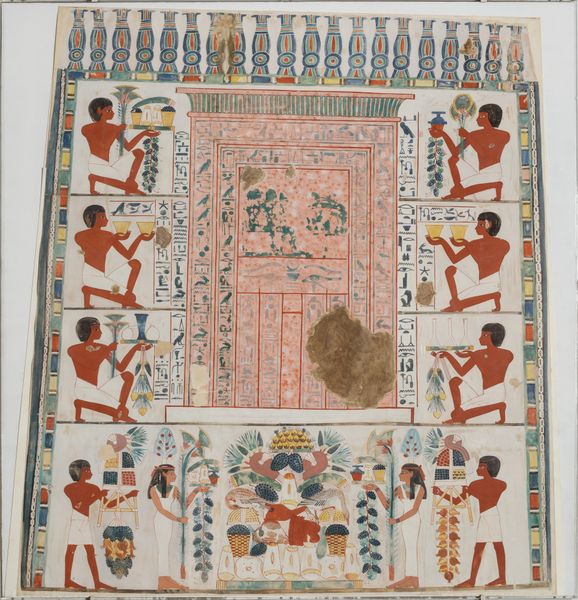
fresco, mural
#
narrative-art
#
ancient-egyptian-art
#
figuration
#
mural art
#
fresco
#
ancient-mediterranean
#
history-painting
#
mural
#
mixed media
Copyright: Public domain
Curator: Looking at this composition, I see so much about daily life. Editor: It’s like stepping into a time capsule! My first impression is of a meticulously organized, yet surprisingly intimate scene. There’s a softness to the palette, a kind of sun-drenched feeling despite its formality. Curator: Absolutely. What you are responding to, perhaps, is how art and ritual intersect. This mural fragment, titled "Opferszene, Sitzend Zweimal Nacht Und Taui," created around 1390 BC, illustrates a sacrificial scene, and its construction with fresco and mixed media carries its own weight of history. The setting comes alive through gesture, color and symbol. Editor: I’m immediately drawn to the figures in the upper register, especially those repetitive, almost rhythmic rows of offering-bearers. It feels almost…mechanical. Curator: They serve a cultural and ceremonial role in ancient Egypt; their posture represents deference and commitment. Those repeating gestures speak to a rigid social hierarchy but also of communal intention, of people coming together to support each other through the life cycle. You know, the seated couple and their offerings and then lower down another group of attendants. Editor: So, the lower scene mirrors and answers to the upper scene? Do you think there's a conscious echo there, linking earthly sustenance with the divine order? It also makes me ponder the lives of these people captured. Their clothing, what appears to be food laid out—what did it all mean to them, beyond just representation? Curator: Food held symbolic value, connected to provision, sustenance, and spiritual nourishment in the afterlife. What about the couple? Note their placement in this mural. Consider the gestures: Their pose speaks to shared reverence but also points to specific rituals for commemoration and honoring life’s passage. Editor: I’m also caught by the lack of perspective, a kind of flattened dimensionality that's both charming and strange to our modern eyes. Curator: That's true of Egyptian art. Think of their stylistic rendering of time and the afterlife! What appears 'flat' conveys an entire belief system that values representation beyond mere duplication. Editor: It all weaves together such a vivid narrative—rituals, beliefs, and snapshots of lives lived thousands of years ago. A real feast for the eyes and the imagination, it gives you so much to consider. Curator: Indeed, offering insight into a rich tapestry of existence—history etched into color and form.
Comments
No comments
Be the first to comment and join the conversation on the ultimate creative platform.
